Your cart is currently empty!
Ecological Breastfeeding: What it is and Why Some Mamas are Doing it
Every mama has a method for breastfeeding her baby. Some mamas nurse and pump. Some mamas exclusively pump. Some mamas exclusively nurse. Some mamas breastfeed on a schedule. Some mamas do ecological breastfeeding.
That last method is the focus of this post – not because I believe it is the only right way to breastfeed, but because it is the method I have experience with.
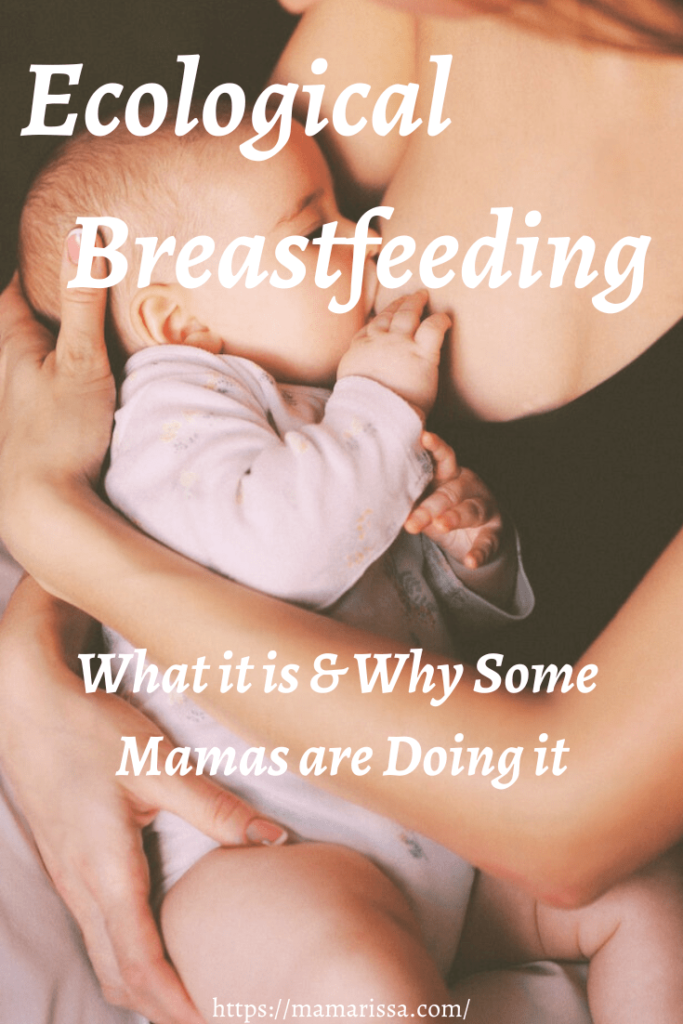
I did not search “Ecological Breastfeeding” while I was pregnant and decide it was the way I would breastfeed. In fact, I was completely unaware of the term until recently (20 months into breastfeeding).
Ecological breastfeeding is just a label that has been slapped onto a method of breastfeeding that has been used for centuries.
It is not something that was created by a lactation consultant. Simply put, it is the way babies naturally nurse if we let them.
But to be clear, ecological breastfeeding is not identical to exclusive breastfeeding. Let me explain what all ecological breastfeeding entails and why it is desirable to some mamas.
Hey Mama, if you find my blog posts helpful, would you help support this blog by making purchases through product links on this page? It will not cost you any extra but the commissions I receive as an Amazon and brand affiliate help to cover the costs of operating this blog so that I can keep it running ad-free. Thank you so much for your support. You are literally the reason this blog was started and the fuel that motivates me to keep it going!
Please note that I am not a medical professional and nothing in this post should be taken as medical advice. Please speak with a midwife, OBGYN, lactation consultant or other breastfeeding service for professional advice.
What is Ecological Breastfeeding?
When my daughter was born, I was determined to exclusively feed her breast milk and do things as naturally in caring for her as I had in birthing her (read my natural hospital birth story here).
Thinking about having a natural birth? Get my FREE guide to discover if it’s the right choice for you! Enter your email address at the bottom of this page for access.
I had a breast pump and assumed I would use it because … Well, isn’t that just what breastfeeding moms do so they can go to an appointment or have a date night without the baby once in a while?
Spoiler alert: For moms who do ecological breastfeeding, a breast pump is among the Pinterest “Things You Will Never Use with Your Baby” lists..
I tried to use it a couple of times but couldn’t get more than a few drops of milk with it. The fact was, my daughter nursed too often for my breasts to ever be engorged.
I didn’t realize I was using a reemerging practice which is modernly referred to as ecological breastfeeding. All I knew was that I was meeting my daughter’s needs in a way I felt was the most natural and healthy way possible.
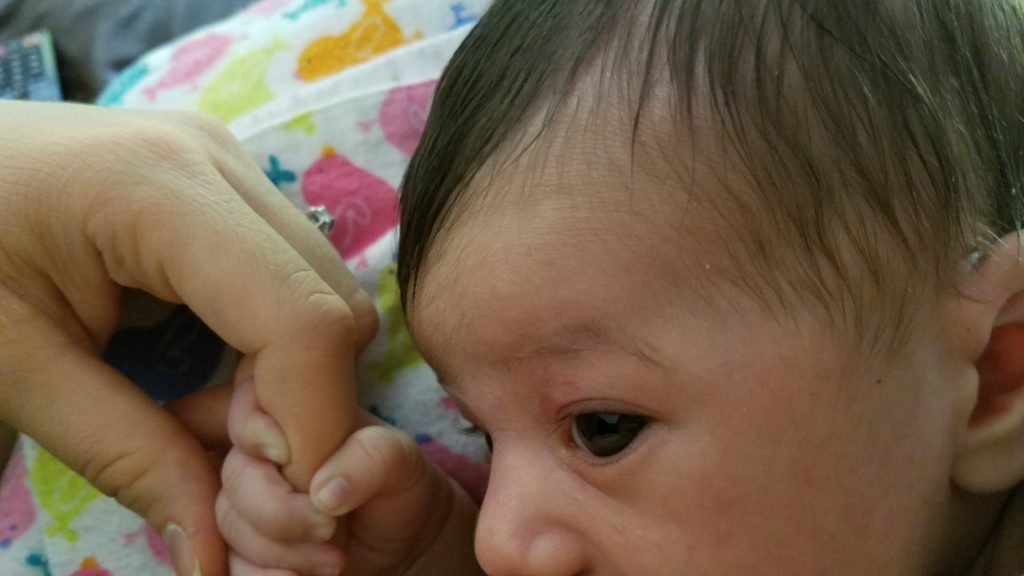
But some women intentionally work to make ecological breastfeeding happen (the reasons for which we will get to shortly).
If you are currently or soon will be breastfeeding, you may be looking for clarification about what criteria must be met for it to be considered ecological breastfeeding as opposed to exclusive breastfeeding.
Wondering what essential items you will need for your breastfeeding journey? Enter your email address at the bottom of the page for my FREE Breastfeeding Preparation Checklist!
Following are the seven standards articulated by Sheila Kippley (read more info about her here) as the definition of ecological breastfeeding:
1. Breastfeeding Exclusively for 6 Months
Exclusive breastfeeding means, of course, no formula, water or solid food before 6 months of age. Exclusive breastfeeding fits within ecological breastfeeding. However, it does not encompass it.
2. Pacifying Baby at Your Breasts
Some people have a problem with moms who allow their babies to “use” them as a pacifier. I have to admit that I wasn’t necessarily a proponent of this idea either before I had my daughter.
But when nursing worked like magic at soothing my fussy baby, I assumed she needed the nutrition of my milk, especially since she has always been petite.
Ultimately, I didn’t care why she wanted to nurse as long as it was effectively meeting some kind of physical or emotional need.
My husband and I lived by the rule that our baby knew what she needed and we gave it to her. I do not believe you can nurse a one month old baby too often – especially a baby who is suffering with infant reflux as mine was.
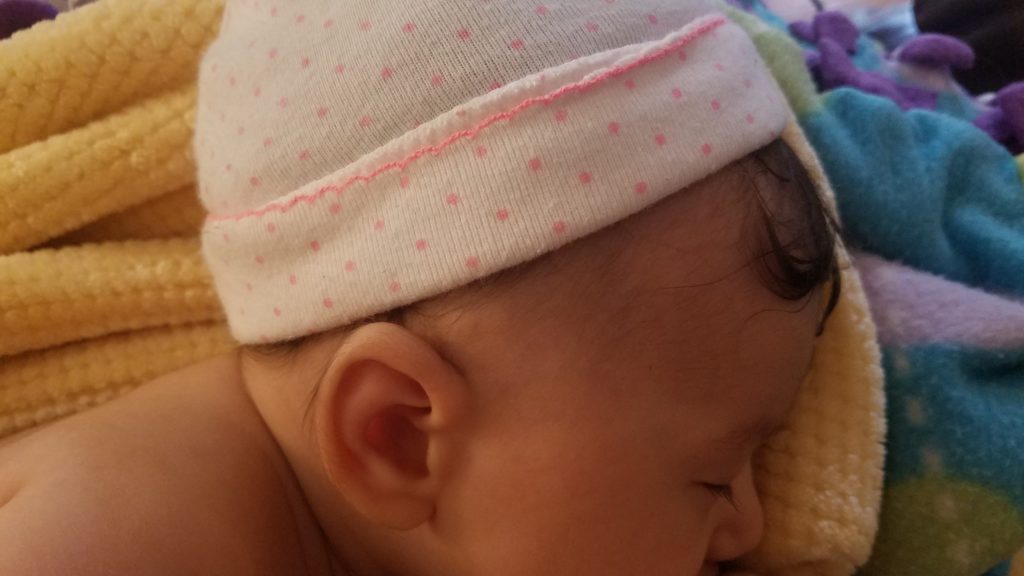
3. Avoiding the Use of Bottles and Pacifiers
Bottles and pacifiers, while certainly helpful tools for sleep- deprived and working moms, are literally a man-made substitute to what God originally designed perfectly Himself.
I am not at all against the use of either for mamas who choose to use them. But it just didn’t feel right for me to use them with my baby.
And if you are wondering how I managed this out in public, a good nursing cover like this one that you don’t have to worry about falling off is invaluable. I cannot even tell you how frequently I used this thing. It is an essential for any breastfeeding mom in my opinion.
4. Sleeping with Baby for Nighttime Feedings
Most babies do not sleep through the night until you train them to (read here why sleep training is not right for every child).
Infants are growing – physically and intellectually – at an incredible rate and they generally need nourishment at least once or twice during the night. Co-sleeping with baby encourages frequent nursing that allows a mom to meet her baby’s needs without ever getting out of bed.
I personally was terrified of sleeping with my newborn daughter. But she would wake up every time I laid her down, and then I would have to nurse her to get her back to sleep. This went on all. night. long.
I had to find a way for me and my daughter to both get the sleep we needed. So I held her while I slept in a La-Z-Boy recliner while wearing this buckling nursing pillow and let her nurse whenever she wanted. We both got much better sleep this way than most new moms.
5. Sleeping with Baby for Daily Nap Feedings
Babies often will only fall asleep by sucking, whether on a pacifier or a breast. Part of ecological breastfeeding is allowing your baby to use your built-in pacifier as a means to sleep during the day the same as at night.
I did this, once again, out of necessity. While I didn’t usually nap with my daughter, I did nurse and hold her while she slept (find out 10 things you can easily do while stuck in the couch with a newborn here). For tired mamas who are able to nap during the day, this is a great way to get some more shut-eye.
6. Nursing Frequently Night and Day Without a Schedule
In other words, nursing on demand, whenever baby wants, regardless of when his last meal was.
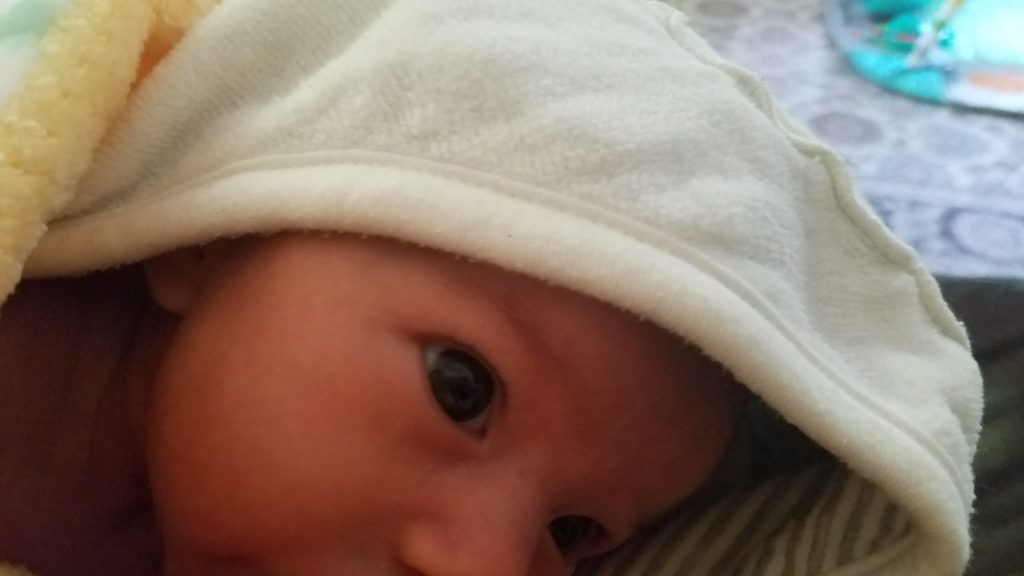
Some people insist babies need to be on a schedule. In reality, though, schedules are usually more about making life more convenient for the mom than they are about doing what is best for the baby.
I’m not saying you shouldn’t have a routine. Children often do better with consistent routines. But forcing baby to wait to nurse when he is clearly hungry simply because it isn’t “time” to eat can be detrimental to your baby’s health and your milk supply.
7. Avoiding Practices Which Restrict Nursing or Separate Mom and Baby
Examples of nursing restricting activities might include things such as having your baby sleep in a different room than you, leaving your baby in someone else’s care with pumped milk or formula, or giving your baby a pacifier.
My lactation consultant told me after my daughter was born that it was important to let her nurse when she wanted to suck rather than give her a pacifier.
She used the illustration of giving a hungry person a piece of gum to chew on instead of food. For young babies especially, even if they are doing a lot of “non-nutritive” sucking, they may still be getting some milk and they are still helping their mamas build up a faithful milk supply.
Ecological Breastfeeding Described in a Sentence
As I eluded to earlier, ecological breastfeeding is basically giving your baby free access to nurse whenever he wants to suck for hunger, comfort or any other reason.
So now you know what ecological breastfeeding is. But you may still be wondering what’s so great about being attached to your baby 24/7 without any help with nighttime feedings from your spouse or the ability to leave your child in someone else’s care for a few hours.
Well, there are a few different reasons some mamas choose this style of breastfeeding.
Why Do Some Moms Choose Ecological Breastfeeding?
To Naturally Space Pregnancies
The most common benefit of ecological breastfeeding you will find on Google is that it naturally spaces pregnancies. The whole trend of ecological breastfeeding was actually intended as a method of natural family planning for Catholic families.
Frequent nursing produces higher levels of prolactin in the mother ‘s body, a hormone that suppresses ovulation. Consequently, ecological breastfeeding makes it unlikely that you will conceive within a year of giving birth.
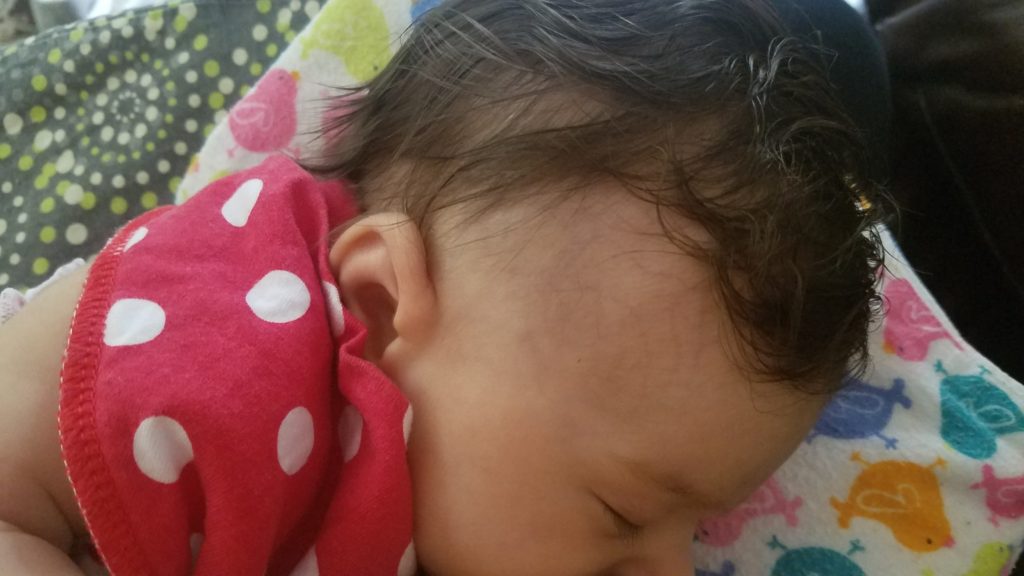
The average time it takes for an ecologically breastfeeding mama to start her cycle again is 14.5 months postpartum. However, some women go even longer.
Despite a couple of phantom periods while breastfeeding, I have yet to see the return of my cycle at 20 months postpartum. I’m sure this is due to the fact that my daughter still nurses very frequently night and day.
Again, note that exclusive breastfeeding is not the same as ecological breastfeeding and may not result in as long of a menstruation absence.
For women desiring to naturally space out their children, you will have the best chances of delaying ovulation by totally committing to ecological breastfeeding.
To Meet Baby’s Needs Naturally
To a “crunchy breastfeeding nazi mom” (as I have heard extreme natural moms referred to), ecological breastfeeding is an all natural, side-effect free remedy to everything from hunger and thirst to pain and fear.
There is a reason babies were designed to suck to sleep and suck to soothe. It’s in their nature and when that nature is nurtured, it is highly effective.
That instinct to suck can certainly be met with a pacifier, but some mamas want to offer a natural solution. For those mamas, ecological breastfeeding is ideal.

To Survive
If you read this reason and wonder what it means, you probably either haven’t had your baby yet or your baby is not excessively attached to her milk dispenser. If you read it and think to yourself, “Yes! That’s me!” then you and I probably have a lot in common when it comes to our children.
While I do value raising my daughter as naturally as I can, I also just couldn’t find a way to avoid having my daughter constantly on my boob without making her miserable.
Occasionally she could be soothed by other means, but for the most part, nursing has always been the most effective way to get my daughter to sleep, ease her reflux discomfort and provide her with a sense of security and safety.
And I consider myself blessed to have such an adequate way of meeting her physical and emotional needs.
Is This Kind of Breastfeeding Right for Every Mama?
So is ecological breastfeeding a good option for every mama? The quick and obvious answer is no.
I’m sure by now you have gathered that this style of breastfeeding is closely linked with certain styles of parenting (such as attachment parenting). No one style of parenting is going to work for every mom.
And to be honest, you can’t entirely plan how you will parent your child before she’s born.
Some aspects of parenting do not come from well thought-out ideas. They evolve out of the overwhelming love and unexplainable instincts a mother gains with the birth of her child.
And that is exactly how I ended up ecologically breastfeeding my daughter. It just happened naturally because it was what fit with my instincts and my daughter’s needs.
You do what works for you, your child, and your family, Mama.
What are your thoughts on ecological breastfeeding? I would love to hear your (respectful) opinion in the comments!


26 responses to “Ecological Breastfeeding: What it is and Why Some Mamas are Doing it”
I just fell into eco breastfeeding with both of my boys naturally as well. The nursing child + mama aspect of it has been amazing and wonderful. That comes with a “but”…the hardest parts for me have been wanting another child but not having a cycle yet. And with my 2nd baby, my oldest absolutely feels the shift in attention he gets from me because eco breastfeeding takes a bit more of my time and attention. Although he had 100% of my time and attention for 3.5 years, it’s always hard! Additionally, my experience is that eco breastfeeding really isolates the partner. My husband definitely feels the need for attention he’s not getting because of the huge commitment of eco breastfeeding. I know it’s just a chapter in life and all will be ok, but it’s a hard balance for us. 23 months with my 2nd and no return of my cycle yet! It’s crazy.
Jessica,
I totally feel you. It is a blessing but it is also hard! And it’s absolutely hard for the spouse and other children as well. I was also eager to have another child while breastfeeding my older daughter … but I was forced to wait because of my daughter’s intense need to nurse.
The best way to bring your cycle back is to make a sudden, dramatic change to your nursing habits, like suddenly, consistently going for a longer stretch at least once a day between nursing. I have several posts on the craziness of my emotions, hormones and fertility while breastfeeding, while partially weaning from breastfeeding and after partially weaning from breastfeeding that you might find interesting.
Of course, only you know if this is doable or realistic with your child. With my first daughter, this was not even an option until she was ready.
I understand the challenge and the balancing act of trying to meet the needs of your child while taking care of everyone else’s needs in the household, including your own. It is not easy to manage. But you are doing amazing for meeting your child’s needs in the way that works for him. It will pass, even though it may not feel like it some days!
[…] Read about what ecological breastfeeding is and why some moms do it. […]
[…] Read what ecological breastfeeding is in this post. […]
[…] situations (such as riding in the car, how well she sleeps and how often she nurses) have improved to the point of being mostly manageable instead of very difficult. But I know this […]
Thanks for the article. I completely agree with ecological breastfeeding as the most effective way for me to meet my baby’s needs. I just wanted to point out that sleeping in a recliner chair is far more risky than cosleeping in a bed (for anyone reading this, please look up safe sleep 7). It really bothers me that our culture makes bedsharing seem a dangerous option when it leads to parents doing far more dangerous practices like sleeping on a couch etc. I’m sure you cover this elsewhere on your page!
Mari,
Thank you for your comment. I do understand that sleeping in a recliner is not recommended by doctors (although, as you pointed out, many practices we often need to resort to as parents are not recommended by medical professionals). And I am certainly not advising others to do this, simply stating what worked for me. I knew that trying put my newborn baby in bed with me would be very dangerous with how deeply I was sleeping. I knew it would be very easy for me to roll onto my side and smother her and not even realize it. When I was holding her in the recliner, I was able to do it in a way that I felt pretty confident was safe, but I would never encourage someone to do this. I think each mother has to seek professional/medical advice and make an informed decision on what will be safest for her and her child.
I did start sleeping with my first daughter on a mattress when she was about a year old and I started doing the same with my second daughter when she was around 8 months old because of other safety concerns about letting her sleep in her crib while hooked up to a feeding tube. Strangely enough, doctors were not the least bit concerned about her sleeping in her own crib with a potentially-strangulating tube all night yet they are often so adamant against co-sleeping! But as a newborn, I personally cannot imagine bringing a baby safely into bed with me. But I know that other moms have done it successfully.
Thank you for this post, Marissa. I just heard about this term in a podcast, I wanted to research a little deeper and it consists of everything me and my husband decided for our daughter. It is great to find your experience here on the blog because often times I feel very lonely since I am the only person I know that breastfeeds this way. It is demanding but totally worth it.
Kamilla,
That is wonderful that you are meeting your daughter’s needs this way! But, yes, it certainly can be a lonely experience. I often felt like I should hide the fact that I nursed my daughter so often and that she could only nurse to sleep. But it is actually a very natural thing for babies and toddlers to want to nurse for comfort, connection and sleep! It is hard to swim against the tide, but we often have to when it comes to making the decisions we know are best for our kids. You are doing such a sweet thing for your daughter <3
Thanks for this post!
I also didn’t know of the term ecological breastfeeding when my little boy was born a few months ago, but after offering a bottle once and a pacifier a few times without success I knew I didn’t want to fight it and if he wanted to nurse I would let him.
I have been wondering though if I can rely on it as a way to naturally space children because everything I see talks about frequent nursing even at night. My baby has started going 6-7 hours between feeds lately and I’ve gotten conflicting opinions from doctors on whether my fertility could return sooner. He still nurses every 1-3 hours during the day and is three months old. Have you seen any research on whether this would still work as natural contraception?Natalie,
Kellymom.com has an article that talks about ecological breastfeeding as a form of natural child spacing. According to her sources, chances of pregnancy while practicing ecological breastfeeding early on are very low but go up after 6 months of age.
Personally, I would say that if your baby has recently suddenly started going longer between feeds at night, I would be more careful if you do not want to get pregnant right now. While it may still be a while before you have a cycle, having that sudden, drastic change in feeding can definitely trigger your body to become fertile again. KellyMom talks about this and I experienced it as well, although it did take a while for me to have a real cycle after that initial triggering of my hormones. I talk in more detail about that in this post.
When I was researching this sort of thing, I was mostly looking for how I could make it possible to get pregnant while breastfeeding. But what I ultimately determined, both from my own experience and what I read online, was that a woman’s hormones are just about the most unpredictable thing in all God’s creation. My experience and understanding is that in general, your body is going to begin the process of returning to fertility whenever it feels like it’s a good idea. But what that actually looks like can vary from woman to woman.
I’m sorry to sound so vague! But the short answer is, Breastfeeding for the first 6 months is a pretty decent form of birth control but any sudden and/or drastic change in breastfeeding makes it possible for your body to resume its cycle. I know there are women who have used ecological breastfeeding as a form of natural child spacing for quite a long time after each birth, but if your little guy is going for long stretches at night, you may not have as solid of protection.
I hope this response was at least a little bit helpful! These female hormones can be tricky to navigate.
I have not hear this term before. Thanks for the explanation. I guess I have been doing this. I just did what seemed natural to me, too. My firstborn son slept on my chest for the first three months of life. I just couldn’t not hold him. He’s three and my daughter is 21 months. I never stopped lactating and still nursing her, I tandem nurses for about 5 months then I stopped with my son. It is hard but it is rewarding because my husband can tell the difference in other methods of nursing/attachment.
Brittany,
Ecological breastfeeding basically is how most babies would naturally nurse if we didn’t put any restrictions on them or offer any alternatives. I had not heard the term when I began breastfeeding either. But it is essentially just an all natural method of breastfeeding.
I completely agree. It can be hard but also rewarding. You are doing an amazing job providing what is right for your children!
Thank you for this article! It brings me more confidence and excitement to do ecological breastfeeding !! I am 36 weeks today, and plan to birth naturally at a hospital- I read your story and that also brought me a ton of encouragement of how possible and worth it, it is !!!
Adriana,
Congratulations on your pregnancy! I am so glad you found this post helpful. I wish you all the best with your future breastfeeding journey!
Breastfeeding offers a great deal to our families and children immensely.
Better health for everyone in the family
Take responsibility, take care of yourself, eat and live more productively during breastfeeding.
The benefit rests with our four children.
The most noticeable of the benefits of breastfeeding to our families is natural contraception.
Other families may not be able to use this method, but for our family it is wonderful in this way.
Both of our pregnancies were truly naturally spaced, with no other form of contraception other than the lactation and external ejaculation my wife and I opted for.
It is our agreement for both parties to choose this method.
Between my first and second pregnancy, my wife didn’t have a period while breastfeeding.
which created great comfort and affection for my wife during the postpartum period.
and create happiness for both of us to the fullest
without having to worry about pregnancy again during intense breastfeeding
My wife and I detected ovulation 1 to 2 times before the second pregnancy.
My wife later became pregnant for the second time shortly after ovulating mucus was detected.
In both of our family’s pregnancies, we had twin girls on both occasions.
at present
Sofia and Jojo
Age 5 years 8 months
Anna and Elsa
2 years 2 months old
Until now, my wife has not had a period after giving birth until now.
And our family has made our determination to continue to breastfeed all of our children until our children stop feeding on their own.Michael,
This is a great example of how effective eccological breastfeeding can be as a completely natural contraceptive. I am so glad it worked out so well for you and your wife. Thank you for sharing your experience!
Hi. I did ecobreastfeeding with all 4 kids with different succes. With first kid period came back at 8 months bc I introduced bottle at 6 months due to return to work. With second it returned at 12 months. With third at 16 months. I’d love to say it went longer with no 4 but baby was sick at 6 months and period came back immediately due to lack of night feedings and fewer nursing. Now expecting baby no 5 and hoping to achieve longer postpartum amenorea.
Linda,
Thank you for sharing your experience with ecological breastfeeding. It is interesting how various women’s bodies can be so different in the areas of hormones and fertility. Ecological breastfeeding can be a wonderful thing for a variety of reasons, but we certainly won’t all have the same results.
I ecologically breastfed my daughter for 21 months and did not have a cycle at all during that time – but she nursed every 1-3 hours around the clock that entire time. And then it took my hormones 9 months to get back on track and start a real cycle again (you can read all about that hormonal craziness in these posts: Hormones After Weaning From Breastfeeding and Trying to Conceive While Breastfeeding).
I’m glad you have had good success with conceiving and have been able to have 4 children. And congratulations for the 5th on the way! But I hope your plan to remain infertile longer this time with ecological breastfeeding goes well for you!
[…] please note that exclusive breastfeeding is not the same as ecological breastfeeding – read this post for more info on […]
[…] Find out what ecological breastfeeding is and why moms do it in this post. […]
[…] Read about what ecological breastfeeding is in this post. […]
[…] Ecological Breastfeeding: What It Is and Why Some Mamas are Doing It […]
[…] This is where the easy part comes in. I loved that I could put some food in front of my baby, and then have my hands free to feed myself – something that was a new experience for me after 6 months of 24/7 breastfeeding! […]
[…] my experience, being an ecological breastfeeder (learn what that is here), the constant pulling down/folding and replacing of my bra cup was constantly messing up the way […]
[…] Find out what ecological breastfeeding is and why some mamas do it in this post! […]
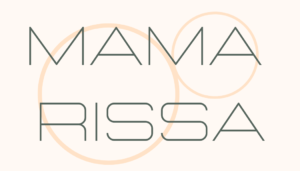

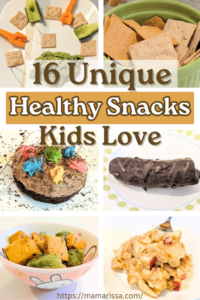

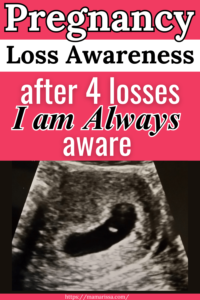

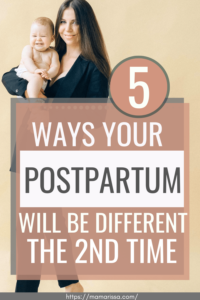
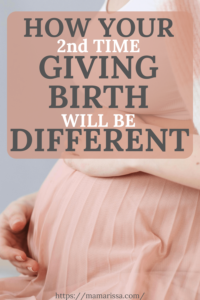
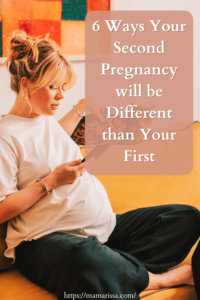
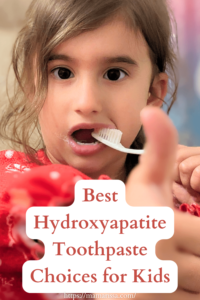
Leave a Reply